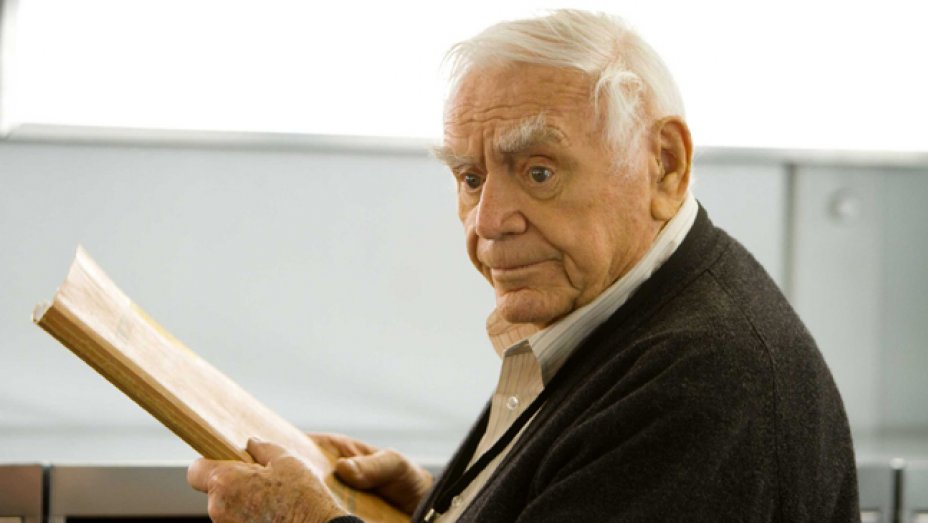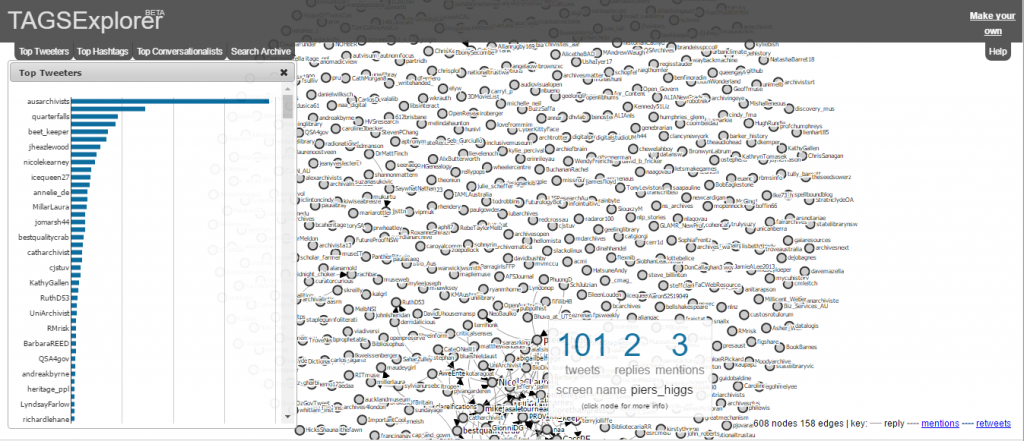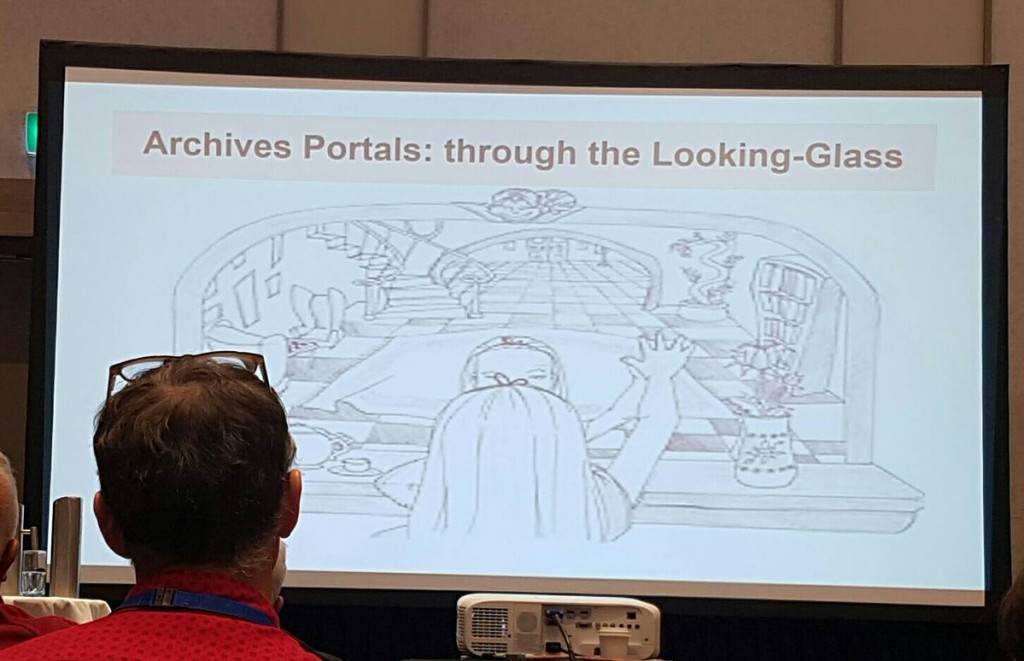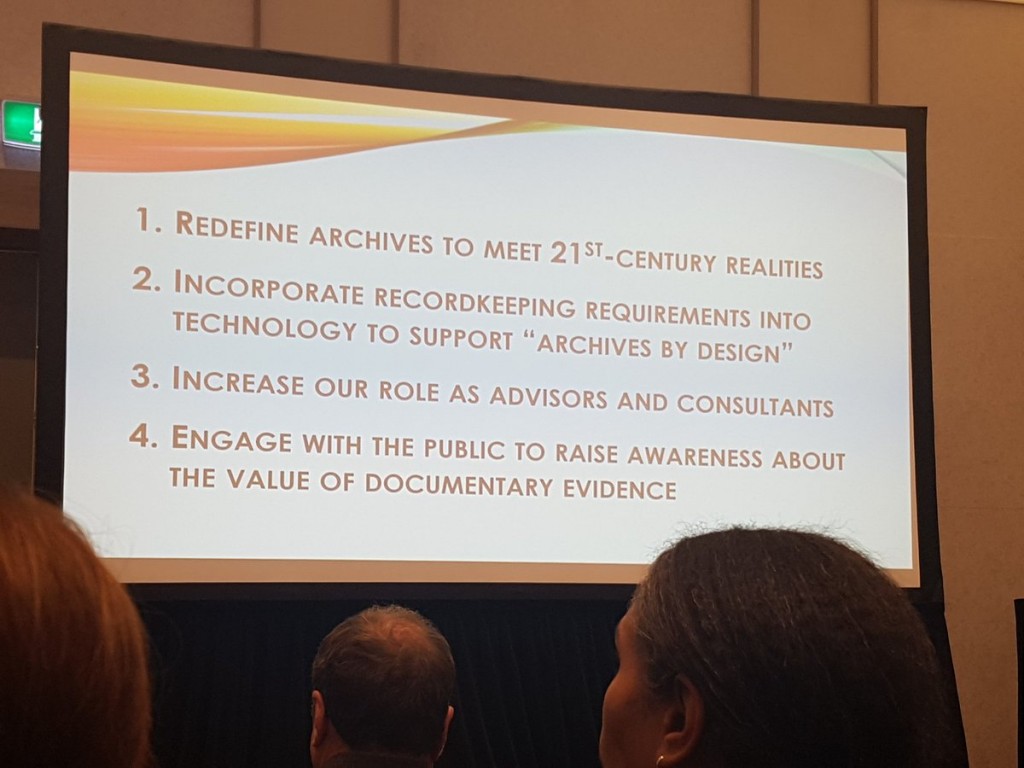“But I don’t want to go among mad people,” Alice remarked.
“Oh, you can’t help that,” said the Cat: “we’re all mad here. I’m mad. You’re mad.”
“How do you know I’m mad?” said Alice.
“You must be,” said the Cat, “or you wouldn’t have come here.”
― Lewis Carroll, Alice in Wonderland
Last week I was at my first Australian Society of Archivists (ASA) conference in Parramatta, and somehow that quote feels cheekily appropriate – and it just seems to fit many of the fun, passionate, and serious conversations that were had across two days. I went for a few reasons; but primarily this was an opportunity to learn about Archives (and to embrace my inner madness archivist).
You may not be that aware of what Archives actually are, and what Archivists actually do. They are not cardigan wearing guards of filing cabinets, but they are people who organise information, protect materials from decay, secure and provide access to knowledge, and come up with all sorts of new ways to analyse, visualise and provide data. Over two days, I met historian hackers, memory keepers and many very passionate people – and, okay, a few did wear cardigans.
This is the last archivist I remember in a Hollywood movie (Ernest Borgnine, in RED)
So just a recap – why is Gaia Resources involved in Archives?
The rabbit hole that we fell down started at the Western Australian Museum, where we started assisting with their Collection Management System (CMS). From here, we have built up a range of experience in collections management, and ended up working with the State Records Office of WA, an Archival institution. We’ve created long partnerships with these collecting institutions and with the developers of the open source software platforms that we use, CollectiveAccess, Access to Memory and Archivematica. This is the the journey I wrote about in a previous blog about Collections becoming GLAM (or maybe GLAMURR, if you want to add Universities, Research and Records).
So, back to the ASA conference. Rather than try to recap everything I’ll point you at the twitter feed – have a look at #asalinks, or go to my own account @piers_higgs to see the history of my tweets, or the infographic below from Tim Sherratt (@wragge). It was a pretty well covered conference via Twitter!
@wragge set up a TAGSExplorer account of the conference – click on the image or here to view
Day One of the conference set the scene of how technology (and more generally, the digital transformation) is changing the shape of the Archives “industry” (“community” seems to fit better). This got my thinking about the changes that are occurring in the archives industry and how similar this situation is to the spatial industry, another area we have worked throughout the history of Gaia Resources.
The spatial industry used to be about making hardcopy maps. In fact, my father used to be involved in publishing and was involved in the creation of hardcopy atlases. When I studied at University in the Geography department, I found Geographic Information Systems, which is (in a simple analogy) the next iteration of map making (with more, of course). And since starting Gaia Resources 12 years ago, we’ve seen the introduction of web mapping, mobile apps with location based software – and software engineering has become a big part of what we do these days in spatial. Gaia Resources has adapted and (I think) made the most of these opportunities as they are presenting themselves to us. It will be interesting to see how the broader spatial industry is adapting – I’m actually heading back to Sydney again for the Cooperative Research Centre for Spatial Information (CRCSI) conference, which I’ll blog about next week.
The digital transformation that is impacting on Archives is impacting on every part of every industry, and every industry has two choices; you hold onto the ‘old way’ (and become obsolete) or you take the most of the opportunities that these changes present. It’s not necessary for Archivists to suddenly become software engineers, but they at least need to know that these skills will be necessary, and to start discussions to embrace this sort of thing. During the conference, Chris Hurley referenced how this is changing the way Archivists operate (and this is what started me on this Alice in Wonderland theme, as well).
Chris Hurley took us briefly to the other side of the looking glass
Towards the end of the first day, we had a session that started me thinking… a lot. This was the Loris Williams Memorial Lecture about the access policies around Aboriginal and Torres Strait Islander Records and it revealed to me (for the first time) the trauma that Archives can cause. Imagine reading the history of your family, and finding Archives that described them in derogatory terms, and how much that would hurt. There were several examples during the conference of how badly this can effect people, with some very personal experiences.
Then, at the start of the second day, Justice Jennifer Coate gave a presentation from her perspective in the Royal Commission into Institutional Responses to Sexual Abuse. This was a powerful keynote that made me realise that without Archives, the Royal Commission could not seek to redress many of the injustices that have occurred. Although I was caught up in the thought that Archives have the power to hurt, they also have the power to heal.
Standouts from the Conference for me were the keynote from Tim Sherratt (and his slides can be seen here) about how he’s making the most of the digital assets within the archives, and Mark Beasley and Ben Carmichael’s talk about the work about engaging with visitors at the Geelong Library and Heritage Centre (more on them in the near future, too). In amongst it all there was a plethora of interesting presentations about change management, access, technology and a wide range of different subjects, including my own participation with Barbara Reed (RKI), James Bullen and Mark Triggs (Hudson Molonglo) about our plans for supporting the Australian Series System in the open source software mentioned above (as well as ArchivesSpace). This approach warrants its own blog as well – coming soon.
The end of the conference (for me) was one of the best keynotes I’ve seen. This was from Laura Millar (@MillarLaura) and her take home messages of the conference was a “call to action”, which I’ve included below. It talks about four main actions, but I particularly liked the first two – very much in the line of “make the most of the opportunities that digital transformation is presenting you”.
Laura Millar’s “call to action” slide
So I came to the conference to learn about the archives industry, and that was definitely accomplished. I also embraced my inner (cardigan wearing) Archivist just a little bit – and have plenty of ideas for how Gaia Resources can work with this industry as a result. We’re well down the rabbit hole now – so stay tuned!
Feel free to start a conversation with us via Facebook, Twitter or LinkedIn, or leave a comment below – or email me directly via piers.higgs@gaiaresources.com.au.
Piers





Comments are closed.